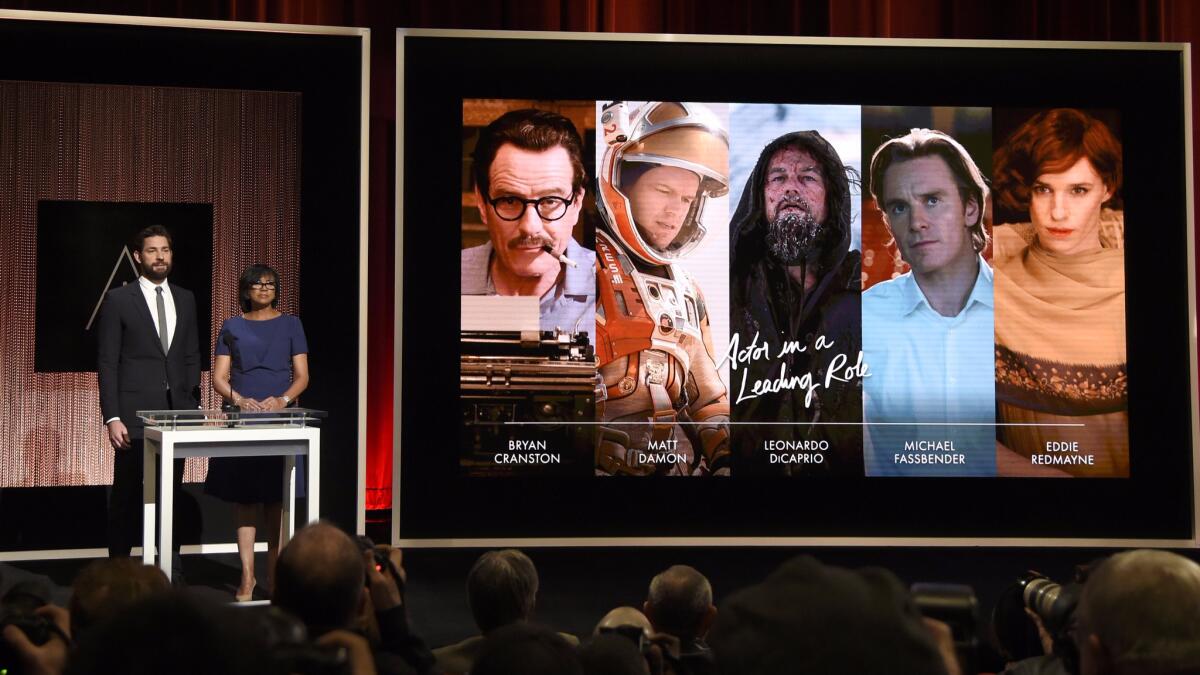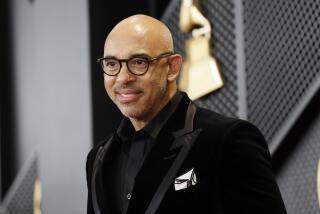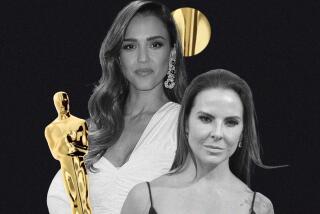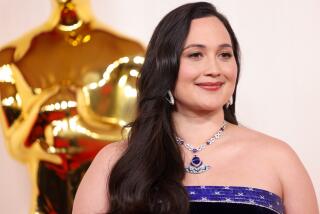How the motion picture academy moved the needle on its diversity push: We crunch the numbers

- Share via
When the Academy of Motion Picture Arts and Sciences announced a new initiative in January aimed at doubling the number of women and minorities in its overwhelmingly white and male ranks by 2020, many asked how such an ambitious goal could possibly be achieved.
On June 29, the academy offered some answers – 683 of them to be exact.
In the latest and most dramatic move in its effort to diversify the nearly 90-year-old institution in the wake of the #OscarsSoWhite controversy, the academy opened its arms to the largest, most diverse new class of invitees ever.
“There’s a newness and a vibrancy about this issue of inclusion,” academy President Cheryl Boone Isaacs told The Times in an interview after the announcement. “This industry has been changing, evolving, expanding in many different areas. And we have led the way.”
But if the academy hopes to hit its own stated goals, it still has a ways to go – and whether it can get there remains, for now, an open question.
According to a new Times analysis, with the 2016 class of invitees the academy has, in a single stroke, gone 52% of the way toward its goal of doubling the number of nonwhites in its ranks. When it comes to boosting the numbers of women, though, the academy is lagging slightly behind pace; the new class brings the academy roughly a fifth of the way toward its 2020 benchmark.
Of the nearly 700 industry professionals included in the 2016 group – from boldfaced names like Idris Elba, Emma Watson, Michael B. Jordan, Brie Larson and Ice Cube to unsung below-the-line craftspeople – 46% were female and 41% were people of color.
To meet the goals it has publicly laid out, in the next three years The Times estimates the academy will have to invite 85 people of color to become members each year – a seemingly feasible challenge given that, according to the academy’s breakdown, there were some 280 nonwhites in this year’s class alone. In what may prove to be a more difficult hurdle, the academy will need to add 395 women to its ranks per year to hit its target – more than the 314 it brought in this year.
In both the academy overall and in the individual branches The Times analyzed, the total share of women and nonwhites rose as a result of the new class of invitees. But digging deeper into the numbers, the breakdowns in terms of race and gender varied significantly among the different branches, in some cases revealing persistent underlying inequities in certain areas of the industry beyond the academy’s control – including, perhaps most notably, in the executive suites where the decisions of which film projects to greenlight are made.
The fruits of the diversity push were particularly evident in two of the branches that in many ways represent the public face of the academy: the actors and directors branches. (Under the academy’s admissions process, potential new members are reviewed by the individual branch committees, which then pass along their recommendations to the Board of Governors.)
In the actors branch – the largest and historically the most diverse in the academy – just 29% of this year’s 69 invitees were white, compared with 68% of last year’s class. Meanwhile, the share of women among the invitees to the actors branch jumped from 28% last year to more than 49% this year.
The directors branch, which added just three female members to its ranks in 2015, invited a whopping 52 women this year, including prominent filmmakers like Mary Harron (“American Psycho”), Patty Jenkins (“Monster”) and Karyn Kusama (“Girlfight”) as well as others like Julia Loktev, Ursula Meier and María Novaro, who may be less well known to American moviegoers.
This large influx of women – which comes just months after the federal Equal Employment Opportunity Commission began an investigation into the lack of female directors in Hollywood – brings the share of women in the directors branch from 9% to more than 18%.
It was a somewhat different story in the executive branch, historically among the most overwhelmingly white and male and the one that holds the most sway over the kinds of movies that get made. Of this year’s 31 invitees, nearly three-quarters were white; as a result, the share of whites in the branch dropped only slightly, from 98% to 96%. In terms of gender, the split among invitees was more even – roughly 45% of the new invitees were women. But even with the inclusion of the 2016 invitees, the executive branch remains 86% male.
Another of the academy’s most male-dominated branches, visual effects, invited just four women to its ranks in 2016 out of 34 invitees, though that was up from only one last year. Two other overwhelmingly male branches, cinematographers and music, each added higher proportions of women, with the share of female members rising by 50% and 35% respectively.
“It shows the tremendous will of a lot of people to be more inclusive,” said music branch member Laura Karpman, who served on the membership committee tasked with finding new members. “It indicates that people do want change. They’re voting for it. They’re voting in members who have the credits and deserve the honor.”
Only one branch analyzed by The Times saw the percentage of whites in the class of 2016 rise compared with last year’s invitees – the writers branch actually went up by 32%. But in sheer numbers, significantly more people of color were invited into the branch, and the end result was that the share of whites overall in the writers branch dropped by 3.5%
See the most-read entertainment stories »
To a large extent, the academy’s class of 2016 reflected a concerted campaign to broaden the group’s membership to every corner of the world, with 283 new international members being invited from 59 countries. “Our ranks are actually tentacles that go out throughout the motion picture business, whether it’s in the United States or globally,” Boone Isaacs said.
That said, given the historical underrepresentation of women and people of color in the film business, it remains to be seen whether the academy can continue to draw such large numbers of new female and minority members into its ranks over the next few years. As has often been pointed out, the root of the academy’s diversity problem lies in the lack of opportunities for women and minorities in Hollywood as a whole, which a report earlier this year by the USC Annenberg School for Communication and Journalism described as the industry’s “inclusion crisis.”
In an interview with The Times in February, former academy President Hawk Koch – who is running for a seat on the academy’s Board of Governors – argued that reaching the 2020 targets would be “impossible,” saying, “There aren’t that many qualified people, period, of any race or gender, to invite each year.”
Even if the academy does succeed in significantly altering the demographic makeup of its membership, it’s unclear to what extent those changes will ultimately carry over into the types of films and performances that are recognized come Oscar season.
To that end, April Reign, who launched the #OscarsSoWhite social media hashtag in 2015 to protest the lack of nominations for actors of color, said she believes more needs to be done.
“If we’re going from 92% white folks to 89% white academy members, that’s not a significant enough change to see a shift in the frame of references that are being represented within the academy itself,” Reign said. “Even with nearly 700 new members, if the procedures don’t change, I’m concerned about what the 2017 academy nominations will look like.”
In spite of the challenges involved – or perhaps because of them – Boone Isaacs insists the academy will persevere in hitting its diversity targets.
“I mean, if you don’t set a goal in order to achieve an objective, then what’s the point?” she told The Times. “That’s what you work towards. That’s what drives everybody. This didn’t just start in January and it’s going to continue because that’s the nature of the business today. I think that this conversation in every way, shape or form is a terrific one for the motion picture business.”
Times staff writers Tre’vell Anderson, Rebecca Keegan, Mark Olsen Amy Kaufman and Glenn Whipp contributed to this report
ALSO:
All about the largest, most diverse Academy class ever
Jesse Williams and the academy just changed Hollywood’s race conversation. What’s next?
‘Straight Outta Compton’ and five other Oscar snubs a more diverse academy might have avoided
NAACP gives a thumbs up to the academy’s new class: ‘The “O” in Oscar should stand for Opportunity’
More to Read
Only good movies
Get the Indie Focus newsletter, Mark Olsen's weekly guide to the world of cinema.
You may occasionally receive promotional content from the Los Angeles Times.











